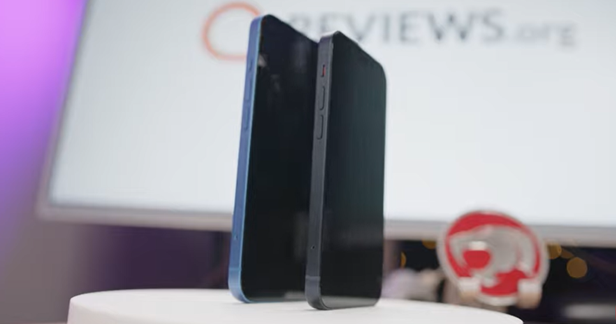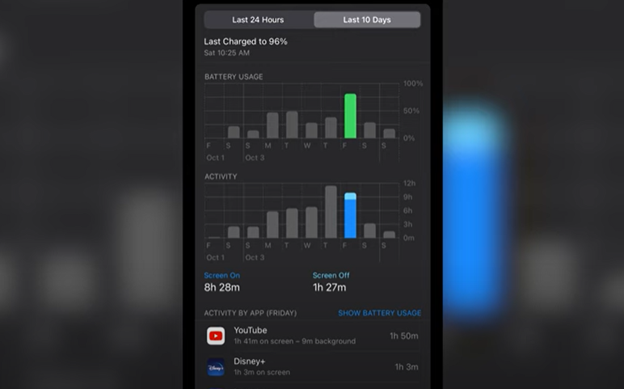Don’t fret, we’re here to help you pick the best iPhone for you, whether it’s the super affordable (yet still powerful) SE or the turbocharged Pro Max. Read on for all the important details on our top five picks, from the pricing to the camera specs.
Choose a price range
You can easily end up spending over $1,000 on a new device. That’s great, if you can afford it. But many of us can’t, so be sure you go into your shopping with a price point in mind. Some iPhones on this list go for under $500, and can be even cheaper if you snag a good promo deal.
Know your phone plan
These days, most smartphones will work with any carrier (you can usually unlock a phone if it isn’t unlocked already). But you should still know what phone plan you’re on to be sure you get a compatible phone (not all iPhones work on 5G, for instance).
Don’t fall for extra features that you’ll never use
There are some very cool features on luxury phones like the iPhone Pro Max, but not everyone will really use them (like the “true depth camera array”). Don’t pay extra for something that you don’t really need!
Consider the future life span of your device
Apple has been pretty good at keeping old phones serviced with new software and security updates, but eventually every phone will enter the digital graveyard. Newer models will almost certainly be serviced further into the future than older ones, which is one major advantage to opting for, say, an iPhone 13 over an iPhone 11.
Know your cameras
A lot of words have been written here and elsewhere about iPhone cameras. But what exactly is a megapixel? Is optical zoom important? Figure out what you really want from a phone camera before going in for a pricey three-lens piece of equipment.
Consider what you use your phone for throughout the day
Overall, the most important thing is to take stock of how you really use your phone. Check your existing phone battery and usage logs to see what you spend the most time doing. If you game a lot, get a phone with a powerful processor and crisp display. If you are on business calls all day, opt for a bigger battery. If you really just text and scroll through Insta every once in a while, consider a budget pick. Apple may have made more phone models than there are Fast and Furious movies, but that doesn’t mean it has cut down on quality or ingenuity. The iPhone 13 comes with an impressive array of features. We’ll go over some of our favorite details here, beginning with the display. The phone’s large, high-definition screen is perfect for those who love to game and stream on their phones. With the iPhone 13, your PUBG Mobile game will look (almost) as good as your COD: Modern Warfare game on your PC. The iPhone 13 is compatible with MagSafe accessories and wireless chargers, so you don’t have to worry so much about those finicky white cords that tend to fray (and disappear just when you need one most!). The iPhone 13 has two cameras on its back, a wide lens and an ultra-wide lens. The camera has 2x optical zoom range, meaning you can capture detail even at a distance. But beyond the specs, the pictures from the iPhone 13 are just stunning. Compared to other phone cameras at the same price point, the iPhone 13 tends to deliver crisper, brighter photos. Users say that its night mode is unbeatable. The phone also lets you choose different photo styles, like “vibrant” and “rich contrast.” You see the iPhone 13’s different photo styles (and learn a lot more about the phone) in this video review from our very own Tshaka Armstrong. But the way to get the best price on the iPhone 13 (besides getting it as a birthday gift from your sweetie) is to buy it from a carrier that’s offering a deal. Verizon, for example, will give you up to $439.99 off the iPhone 13 (plus a bunch of other perks), when you sign up for a new unlimited plan. While the ProMotion technology is definitely the biggest upgrade with the Pro Max, you’ll also see better overall brightness and clarity. In short, this is definitely the best iPhone display on the market right now (and perhaps the best phone display of all time). But you don’t have to take our word for it. Check out this video review from Tshaka to see the Pro Max’s display in action. Every photo comparison we’ve seen shows that the iPhone 13 Pro Max is the best iPhone for photographers of all varieties. It excels in low-light situations, long-distance shots (with a 3x zoom feature), and on bright days when there can be a lot of glare from the sun. Plus, you’ll get the nifty photo style options that come on the regular iPhone 13. The SE is basically a stripped down version of Apple’s flagship phones. It has all of the basics: a good camera, a decent battery, and a high-performing processor, without the more expensive features, like additional camera lenses and huge display. Here’s everything you need to know. The new 2022 model is said to have a much larger battery that can easily handle 10 hours of audio playback. While it certainly doesn’t match the battery life of the iPhone 13 Pro Max, it’s enough for most people. That said, the iPhone SE (2022) can still take some gorgeous photos and videos that will do the trick for casual TikTok posts, family portraits, and silly cat pics. You can see some of the phone’s pictures for yourself in Tshaka Armstrong’s video review of the iPhone SE. The newest version of the iPhone SE is equipped with 5G technology. This is great news for those who want to hop onto T-Mobile or Verizon’s new millimeter-wave networks but don’t want to pay out the nose for a luxury 5G phone. As for the display itself, you’ll get a beautiful HDR image that actually packs in a higher resolution than the standard iPhone 12. As always, we’ll refer you to our favorite Youtube phone reviewer, Tshaka, for a closer look at the iPhone 12 mini’s camera in action. This is why we’re talking about the iPhone 11, which was released all the way back in 2019, before the pandemic, before Prince Harry and Meghan Markle quit the royal family, and before Tiger King ever aired. It’s a relic of a bygone time, but we’re here to tell you that it still kicks. The iPhone 11 set the standard for “good phone camera” and not much has really changed with the newer models. It takes incredible wide-angle photos, clear low-light pictures, and stellar 4K videos. Tshaka shows off everything it can do in the video below. Some of the heaviest users might notice a bit of lag when they’re using high-demand apps or doing a serious bout of online gaming, but it should be negligible (especially when compared to any other phone that’s three years old). While it retails for $499, you might be able to score this phone for less (or even for free) if you’re signing up for a new plan, like this one from Verizon Wireless.
iPhone 13: An elegant mixture of high-performance and affordability, the iPhone 13 packs in a super-fast processor, high-performance dual camera lenses, and tons of powerful features with a starting price under $800. iPhone 13 Pro Max: This is, quite simply, the most powerful iPhone ever made. It has best-in-class cameras, an enormous battery, and a seamless, 120 Hz display. It’s not cheap but worth it for the right user. iPhone SE: Apple’s budget iPhone gives you the same powerful internal processor that the flagship iPhone 13 uses for a much lower price. It also has a beautiful display, powerful camera, and decent battery life. iPhone 12 mini: Pay less for the pocket-friendly version of Apple’s iPhone 12. You really don’t miss out on much with this scaled down phone (besides a slightly smaller battery). iPhone 11: This iPhone may be a few years old, but it’s aged like a fine wine. Save hundreds of dollars while still enjoying smooth performance, a crisp display, and stellar photos.
That was one long review. But we’re fading like your old iPhone 7’s battery life, so it’s time to sign off. Thanks for sticking with us! We judged the best iPhone models of 2022 by looking at the following criteria (not necessarily in order of importance):
Price Battery life Charging performance Processor speed and reliability Display technology Display size Storage Casing and overall design Camera lenses Camera software and features Wireless technology (4G, LTE, 5G, etc.)
If you think we missed something, feel free to chime in using the comments section below.





